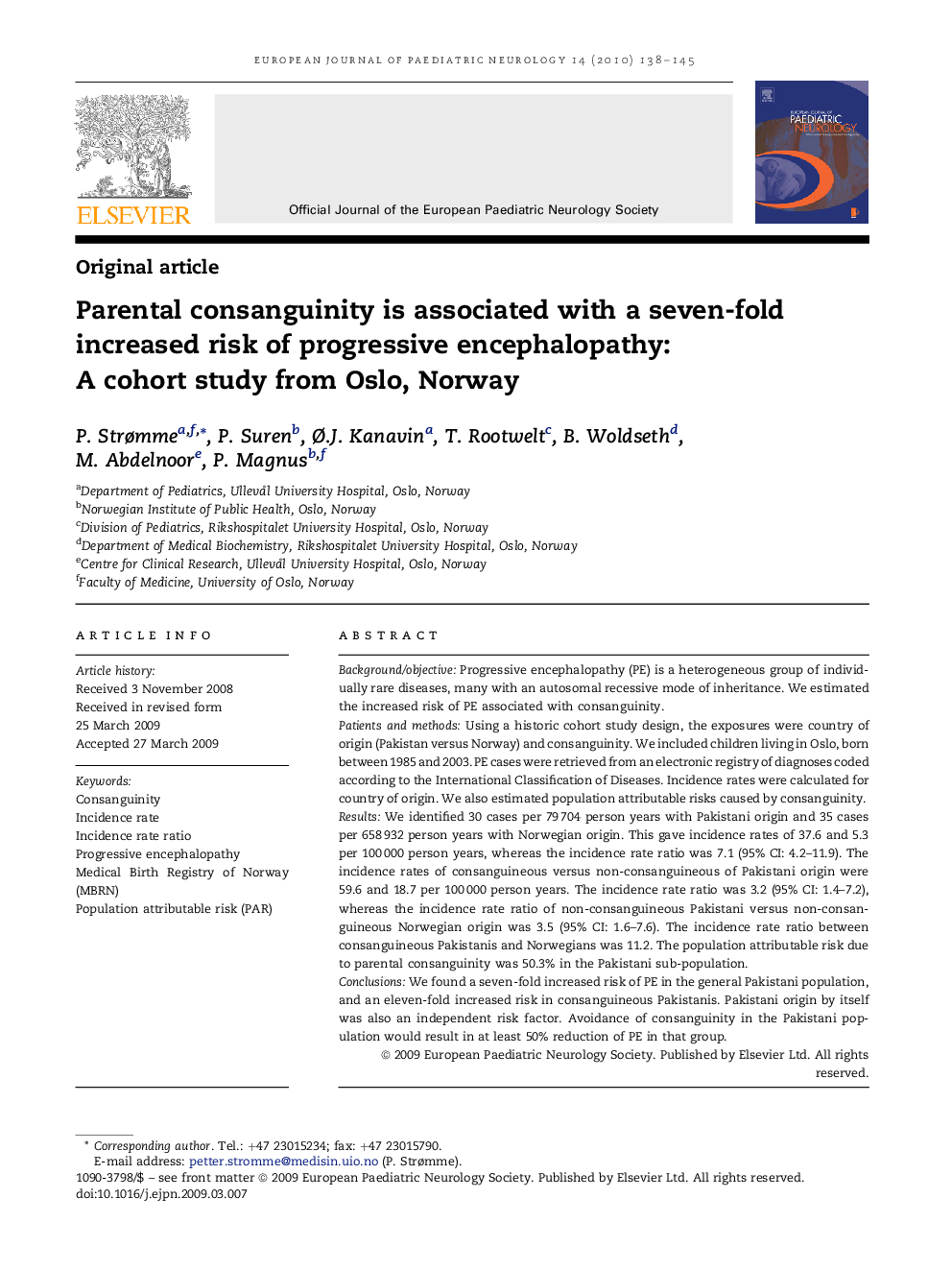| Article ID | Journal | Published Year | Pages | File Type |
|---|---|---|---|---|
| 3054360 | European Journal of Paediatric Neurology | 2010 | 8 Pages |
Background/objectiveProgressive encephalopathy (PE) is a heterogeneous group of individually rare diseases, many with an autosomal recessive mode of inheritance. We estimated the increased risk of PE associated with consanguinity.Patients and methodsUsing a historic cohort study design, the exposures were country of origin (Pakistan versus Norway) and consanguinity. We included children living in Oslo, born between 1985 and 2003. PE cases were retrieved from an electronic registry of diagnoses coded according to the International Classification of Diseases. Incidence rates were calculated for country of origin. We also estimated population attributable risks caused by consanguinity.ResultsWe identified 30 cases per 79 704 person years with Pakistani origin and 35 cases per 658 932 person years with Norwegian origin. This gave incidence rates of 37.6 and 5.3 per 100 000 person years, whereas the incidence rate ratio was 7.1 (95% CI: 4.2–11.9). The incidence rates of consanguineous versus non-consanguineous of Pakistani origin were 59.6 and 18.7 per 100 000 person years. The incidence rate ratio was 3.2 (95% CI: 1.4–7.2), whereas the incidence rate ratio of non-consanguineous Pakistani versus non-consanguineous Norwegian origin was 3.5 (95% CI: 1.6–7.6). The incidence rate ratio between consanguineous Pakistanis and Norwegians was 11.2. The population attributable risk due to parental consanguinity was 50.3% in the Pakistani sub-population.ConclusionsWe found a seven-fold increased risk of PE in the general Pakistani population, and an eleven-fold increased risk in consanguineous Pakistanis. Pakistani origin by itself was also an independent risk factor. Avoidance of consanguinity in the Pakistani population would result in at least 50% reduction of PE in that group.
